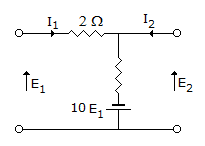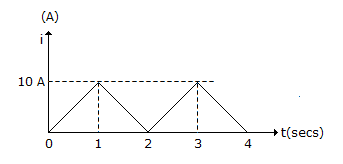Electronics and Communication Engineering - Networks Analysis and Synthesis
Exercise : Networks Analysis and Synthesis - Section 7
- Networks Analysis and Synthesis - Section 14
- Networks Analysis and Synthesis - Section 27
- Networks Analysis and Synthesis - Section 26
- Networks Analysis and Synthesis - Section 25
- Networks Analysis and Synthesis - Section 24
- Networks Analysis and Synthesis - Section 23
- Networks Analysis and Synthesis - Section 22
- Networks Analysis and Synthesis - Section 21
- Networks Analysis and Synthesis - Section 20
- Networks Analysis and Synthesis - Section 19
- Networks Analysis and Synthesis - Section 18
- Networks Analysis and Synthesis - Section 17
- Networks Analysis and Synthesis - Section 16
- Networks Analysis and Synthesis - Section 15
- Networks Analysis and Synthesis - Section 1
- Networks Analysis and Synthesis - Section 13
- Networks Analysis and Synthesis - Section 12
- Networks Analysis and Synthesis - Section 11
- Networks Analysis and Synthesis - Section 10
- Networks Analysis and Synthesis - Section 9
- Networks Analysis and Synthesis - Section 8
- Networks Analysis and Synthesis - Section 7
- Networks Analysis and Synthesis - Section 6
- Networks Analysis and Synthesis - Section 5
- Networks Analysis and Synthesis - Section 4
- Networks Analysis and Synthesis - Section 3
- Networks Analysis and Synthesis - Section 2
31.
Magnetic effect of current is used in generators but not in motors.
Answer: Option
Explanation:
Magnetic effect of current is used in both generators and motors.
32.
For a nonlinear resistance
Answer: Option
Explanation:
In a non-linear resistance v-i graph is a curve.
33.
The Z parameters Z11 and Z21 for the 2-port network in the figure.


Answer: Option
Explanation:
Apply mesh analysis in both loop
 11E1 = 6I1 + 4I2, E2 + 10 E1 = 4 (I1 + I2)
11E1 = 6I1 + 4I2, E2 + 10 E1 = 4 (I1 + I2)

Z21  .
.
34.
For the wave shown in figure, the average value is


Answer: Option
Explanation:
Since area of triangle is half of the rectangle enclosing it, average value = 0.5 x peak value.
35.
Assertion (A): For a physically realisable driving point function, the degree of numerator and denominator should be equal.
Reason (R): The sum of positive real functions is real.
Answer: Option
Explanation:
The degrees can differ by a maximum of 1.
Quick links
Quantitative Aptitude
Verbal (English)
Reasoning
Programming
Interview
Placement Papers